Trinidad and Tobago 2019
Sunday 27th January – Thursday 7th February 2019
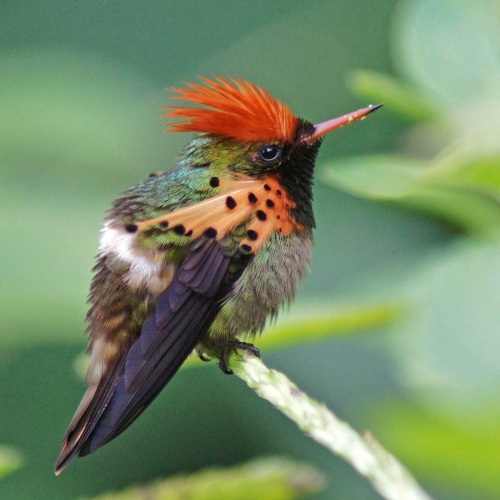 The tropical islands of Trinidad and Tobago are situated just a few miles off the coast of Venezuela. The island’s ornithological riches have long attracted birdwatchers and serve as a perfect introduction to the avifauna of the South American continent. Despite the relatively small size, the islands are extremely diverse and conveniently coupled with relatively easy birding conditions in a relaxed, friendly atmosphere. At the famous Asa Wright Nature Centre we’ll receive a warm welcome and connect with some of the islands 68 or so bird families - bellbirds, jacamars, toucans, woodcreepers, antbirds, manakins, and gnatwrens to mention just a few of the Neotropical groups to be found in the centre’s grounds. And there are two endemic species to be found on this tour - Trinidad Piping-Guan and Trinidad Motmot. Hundreds, sometimes thousands of Scarlet Ibis provide an indescribable spectacle at they fly into roost in the mangroves, and we’ll also have the eerie experience of seeing the world’s most accessible Oilbird cave, as well as seeing the bizarre displays of Golden-headed and White-bearded Manakins in the nature centre's grounds. Later in the tour we transfer to the tiny island of Tobago which hosts a number of key species including Rufous-vented Chachalaca, stunning Blue-backed Manakins and the range restricted White-tailed Sabrewing. Close by, Little Tobago Island offers nesting Brown and Red-footed Boobies, as well as Red-billed Tropicbirds and many other fantastic species - a treat not to be missed. This is a rather luxurious and relaxed-paced birding tour, where you can enjoy the sunshine and sip rum punch whilst enjoying a veritable kaleidoscope of brightly coloured tropical birds from the veranda. So for some amazing winter birding there's nowhere better than the tropical paradise islands of Trinidad and Tobago.
The tropical islands of Trinidad and Tobago are situated just a few miles off the coast of Venezuela. The island’s ornithological riches have long attracted birdwatchers and serve as a perfect introduction to the avifauna of the South American continent. Despite the relatively small size, the islands are extremely diverse and conveniently coupled with relatively easy birding conditions in a relaxed, friendly atmosphere. At the famous Asa Wright Nature Centre we’ll receive a warm welcome and connect with some of the islands 68 or so bird families - bellbirds, jacamars, toucans, woodcreepers, antbirds, manakins, and gnatwrens to mention just a few of the Neotropical groups to be found in the centre’s grounds. And there are two endemic species to be found on this tour - Trinidad Piping-Guan and Trinidad Motmot. Hundreds, sometimes thousands of Scarlet Ibis provide an indescribable spectacle at they fly into roost in the mangroves, and we’ll also have the eerie experience of seeing the world’s most accessible Oilbird cave, as well as seeing the bizarre displays of Golden-headed and White-bearded Manakins in the nature centre's grounds. Later in the tour we transfer to the tiny island of Tobago which hosts a number of key species including Rufous-vented Chachalaca, stunning Blue-backed Manakins and the range restricted White-tailed Sabrewing. Close by, Little Tobago Island offers nesting Brown and Red-footed Boobies, as well as Red-billed Tropicbirds and many other fantastic species - a treat not to be missed. This is a rather luxurious and relaxed-paced birding tour, where you can enjoy the sunshine and sip rum punch whilst enjoying a veritable kaleidoscope of brightly coloured tropical birds from the veranda. So for some amazing winter birding there's nowhere better than the tropical paradise islands of Trinidad and Tobago.
|
|
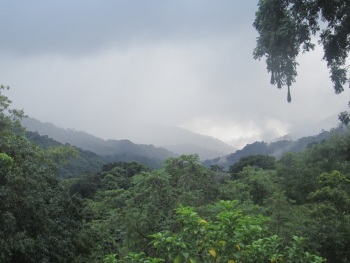 |
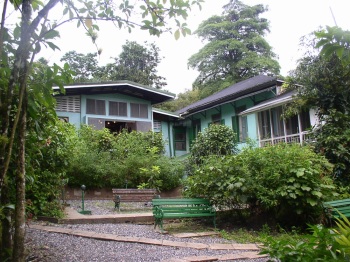 |
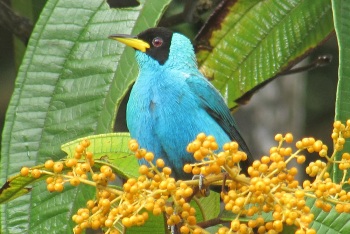 |
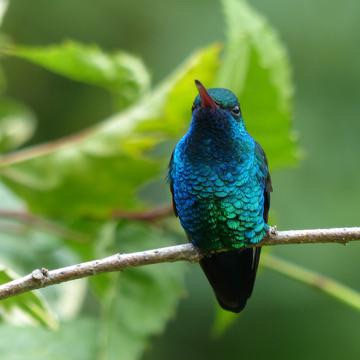 |
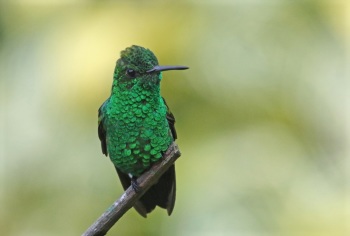 |
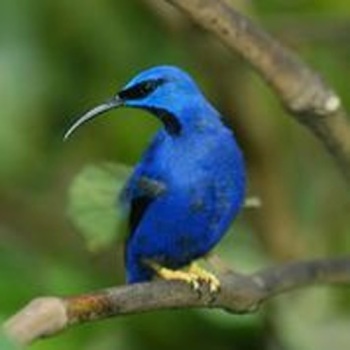 |
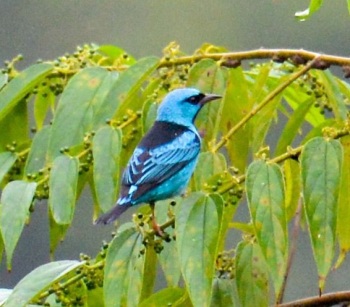 |
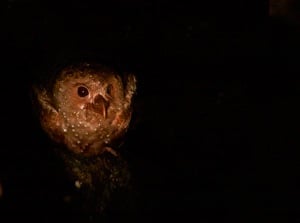 |
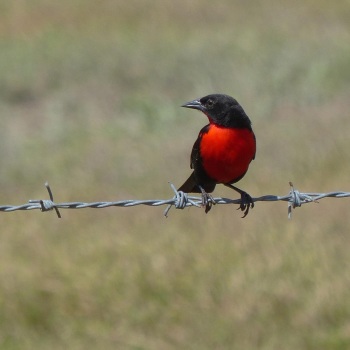 |
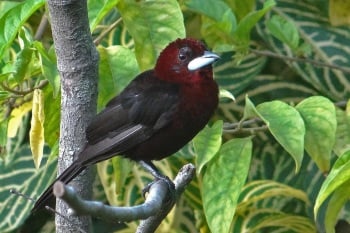 |
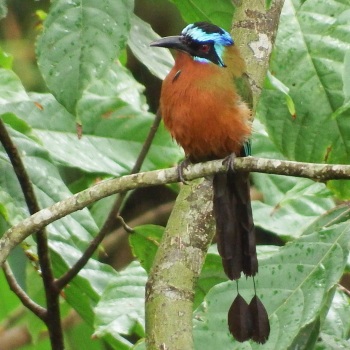 |
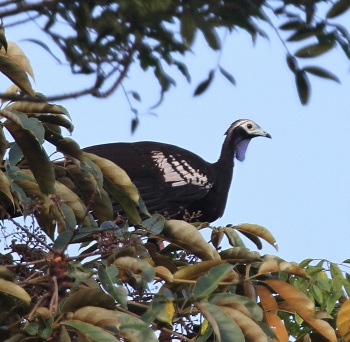 |
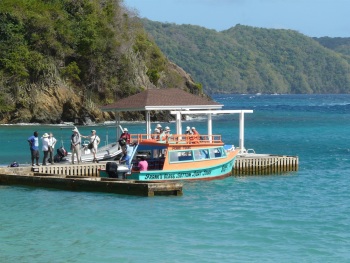 |
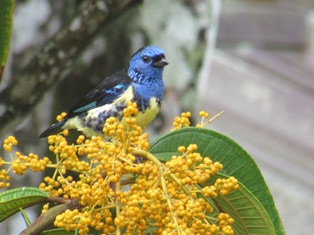 |
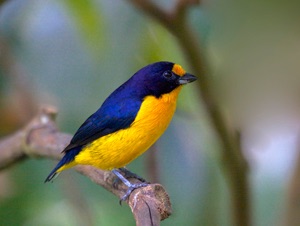 |
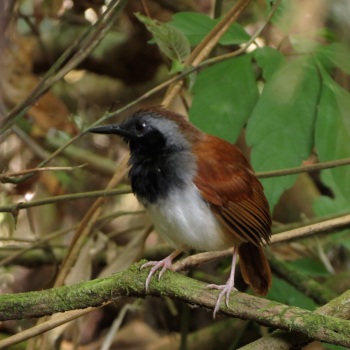 |
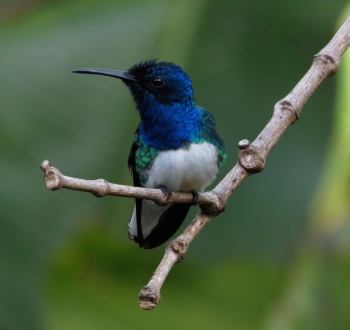 |
Day 1 UK - Port of Spain, Trinidad - 27th January
Arrival at Piarco International Airport in Port of Spain, Trinidad and transfer about 50 minutes to the world famous Asa Wright Nature Centre andlodge where we will spend the next 6 nights. If we arrive while there is still daylight you'll get your first chance to enjoy the vista from the Centre's veranda and see some of the many colourful birds that frequent the feeders here.
Day 2 Asa Wright - Aripo Agricultural Station
The action begins in earnest at first light. What can only be described as a birding ‘frenzy’ develops just off the veranda around 6 am. The feeders at Asa Wright Nature Centre (AWNC) must surely be some of the best in the world and we’ll find ourselves overwhelmed by hummingbirds, tanagers, honeycreepers, euphonias, flycatchers and much more; White-chested Emerald, White-necked Jacobin, Blue-chinned Sapphire, Rufous-breasted and Little Hermits, Copper-rumped Hummingbird, Crested Oropendola, Blue-gray, Palm, White-lined, Silver-beaked and Turquoise Tanagers, Barred Antshrike, Tufted Coquette, Purple and Green Honeycreepers, and Violaceous Euphonia could all be seen. After breakfast we will explore the grounds and trails of the nature centre where species such as Double-toothed Kite, Scaled Pigeon, Black-tailed Tityra, Common Black-hawk, Gray-lined, White and Zone-tailed Hawks, Channel-billed Toucan, Bearded Bellbird, Piratic and Boat-billed Flycatchers, Squirrel Cuckoo, Tropical Pewee, Tropical Kingbird, Trinidad Motmot, Yellow-olive and Yellow-breasted Flycatchers and a host of other great birds can be found. We should also be treated to the leks of Bearded Bellbird, and Golden-headed and White-beared Manakins. Further birding on site in the afternoon may produce Cocoa and Spectacled Thrushes, Gray-fronted Dove, Green-backed and Guianan Trogons, Channel-billed Toucan, Chestnut Woodpecker, Rufous-browed Peppershrike, both Turquoise and Bay-headed Tanagers, Green Hermit, Tufted Coquette, Black-throated Mango, Forest Elaenia, Ochre-bellied Flycatcher, Yellow Oriole, White-necked Thrush, Rufous-breasted Wren, White-flanked Antwren and Long-billed Gnatwren. Fortunately, the AWNC will be our base for the next six nights giving us plenty of time get to grips with all of these new birds and families.
After taking an early afternoon break we head out again around 4.00pm (taking a hot dinner with us) for a night-birding excursion. The first stop, still in good birding light, will be for Fork-tailed Palm-Swifts, Sulphury Flycatchers and perhaps Moriche Oriole. We then drive a short distance north to the Aripo Livestock Station. After a picnic supper, we’ll slowly drive the dirt tracks for White-tailed Nightjar and Common Pauraque, with Common Potoo and Rufous Nightjar being more remote possibilities. Barn Owl is also possible as is Tropical Screech-Owl, though the latter make take some time to locate.
Day 3 Asa Wright - Northern Range - Blanchisseuse Road
Much of the day will be spent exploring the Northern Range as we make frequent stops along the Blanchisseuse Road continuing through the mountains to the village of Morne la Croix, where we’ll break for afternoon tea and enjoy a fine display of parrots as they head to roost. With any luck we will find Swallow-tailed Kite, Bat Falcon, Collared Trogon, Ornate Hawk-Eagle, Channel-billed Toucan, Short-tailed Hawk, Streaked and Euler’s Flycatchers, Rufous-tailed Jacamar, Blue-headed Parrot, Lilac-tailed Parrotlet, Orange-winged Parrot, Collared Trogon, Golden-olive, Red-rumped and Chestnut Woodpeckers, Ferruginous Pygmy-Owl, Stripe-breasted Spinetail, Cocoa and Plain-Brown Woodcreepers, Dusky-capped and Slaty-capped Flycatchers, Rufous-breasted Wrens, Long-billed Gnatwren, Golden-fronted Greenlet, Speckled and Hepatic Tanagers and Yellow-rumped Cacique. The North Range is also home to the endemic Trinidad Piping-Guan, which is possible but tough to find though we do have plans for a dedicated Piping-Guan excursion later in the tour. The day should also provide an opportunity to observe the curious world of Army and Leaf-cutter Ants.
Day 4 Asa Wright - Aripo Agricultural Station - Nariva
After yesterday’s full day in high elevation forest, we head down to the lowlands this morning. The Aripo Agricultural Station offers access to a more open terrain and subsequently a range for new bird species for us such as Great Kiskadee, Carib Grackle, Short-tailed Swift, Cocoi Heron, Savannah Hawk, Gray-headed Kite, Yellow-headed Caracara, Wattled Jacana, Southern Lapwing, Green-rumped Parrotlet, Fork-tailed Palm-Swift, White-winged Swallow, White-headed Marsh-Tyrant, Pied Water-Tyrant, Yellow-chinned Spinetail, Red-breasted Meadowlark, Grassland Yellow-Finch and Ruddy-breasted Seedeater. We then drive (about 45 minutes) to the coast to enjoy a picnic lunch on the beach and scan for seabirds at Manzanilla where commoner species should include Brown Pelican and Magnificent Frigatebird. At the mouth of the Nariva River, the freshwater herbaceous swamp and mangrove swamp-forest offer some spectacular birding and we hope to see Yellow-headed and Crested Caracaras, Savannah Hawk, Pearl Kite, Gray-lined Hawk, Plumbeous Kite, Green and American Pygmy Kingfishers, Black-crested Antshrike, Silvered Antbird, Brown-crested Flycatcher, Pinnated Bittern, Yellow-hooded Blackbird, White-tailed Goldenthroat, Long-winged Harrier and Aplomado Falcon (rare). We finish the day’s excursion in search of Red-bellied Macaws as well as Yellow-crowned Parrot and other parrots as we look toward Bush Bush Wildlife Sanctuary. The visit could also produce Red Howler Monkeys.
Day 5 Asa Wright - SW Trinidad Marshes - West Coast
We depart early, pre-dawn in fact, to arrive at the Oropouche River for sun rise. Spotted Tody-flycatchers are present in the marshes and restricted to south-western Trinidad, and Pinnated and Stripe-backed Bitterns, Striped Cuckoo, Black-crested Antshrike, Pied Water-tyrant and White-headed Marsh-tyrant, Red-breasted Meadowlark and Yellow-hooded Blackbirds, Yellow-chinned Spinetail, Green Kingfisher and Masked Yellowthroat could also be seen in this excellent area before the heat of the day suppresses bird activity and we head for some shade. In mid-morning we head north to an extensive area of tidal mudflats along the west coast – locally known as “Waterloo”. This area features many good birding spots and year round attractions including Magnificent Frigatebird, Brown Pelican, Neotropic Cormorant, Tricolored Heron, Yellow-crowned Night-Heron, Black-necked Stilt, Southern Lapwing, Willet, Hudsonian Whimbrel, Greater and Lesser Yellowlegs, Semi-palmated and Black-bellied Plovers, Short-billed Dowitcher, Laughing Gull, Royal Tern and Black Skimmer. We then travel just a few miles to the beachfront at Carli Bay looking out for gaudy Saffron Finches though they can be difficult to find in the heat of the day. This is also one of the better sites in Trinidad to find Rufous Crab-Hawk, a rather rare resident with perhaps no more than five breeding pairs on the island.
Day 6 Maracas St Joseph Valley - Caroni Swamp Bird Sanctuary
After a little more time at Asa Wright Nature Centre in the morning we head west to a private garden nestled high up in the hills overlooking the Maracas St Joseph Valley. Theo and Gloria Ferguson invite birders to their home for hummingbird watching par excellence - fourteen of the eighteen species of hummingbird recorded in T&T have been recorded here. We will be invited to sit, sip home-made juice and sample home-made cakes whilst watching the feeding frenzy happening just feet away.
Afterwards we’ll take a steady drive to the Caroni Bird Sanctuary Information Centre. Whilst waiting for our boat to depart roadside birds could include Rufous-browed Peppershrike, Straight-billed Woodcreeper and Masked Cardinal. Caroni Swamp comprises of about 40 square miles of mangrove, much of it protected. Our boat leaves at around 4.00pm under the leadership of an experienced tour guide who tours the swamp each day. The undoubted attraction is the sheer spectacle of hundreds/thousands of Scarlet Ibis coming into roost, but first we spend time navigating some of the mangrove channels for other specialties including Green-throated Mango, Greater Ani and Bicolored Conebill. Day-roosting Tropical Screech-Owls and a Common Potoo are sometimes found close to the water and we have a distinct chance of a kingfisher or two with Green, Ringed and American Pygmy all present in the swamp. Boat-billed Heron will be a major target and has a reputation for being the least confiding of the herons. Ruschenberger’s Tree Boa, Silky Anteater and Spectacled Caiman might also be seen on the trip before we moor up and wait for parties of Scarlet Ibis, Tricolored and Little Blue Herons and Snowy Egrets flying into roost. We arriving back at the dock at dusk and return direct to the AWNC for a slightly later than usual dinner.
Day 7 Asa Wright – Dunston cave - Grande Riviere
On our final morning at AWNC we focus our attention on Oilbirds and will visit one of the most accessible Oilbird colonies anywhere in the world. The walk along the trail takes around 45 minutes and can be steep in places, but there are hand-rails and a dedicated Oilbird viewing area to keep things safe. The trail also provides good opportunities for Gray-throated Leaftosser and Red-crowned Ant-Tanager, as well as a chance of viewing a sleeping Fer de Lance. (Please note: AWNC regulates no flash photography at the Oilbird Cave). After lunch at the center we’ll transfer to a beach front hotel in Grande Riviere in north-east Trinidad for a one night stay. Local birds at Grande Riviere could include Cocoi Heron, Gray-headed Kite, Hook-billed Kite, Bat Falcon, Lilac-tailed Parrotlet, Orange-winged and Blue-headed Parrots, Striped Cuckoo, Short-tailed Nighthawk, Chestnut-collared, Gray-rumped and Band-rumped Swifts, Rufous-breasted, Green and Little Hermits, Black throated Mango, Brown Violetear, Ruby Topaz, White necked Jacobin, Tufted Coquette, Blue-chinned Sapphire, White-chested Emerald, Copper-rumped Hummingbird, Rufous tailed Jacamar, Crimson crested Woodpecker, Plain Ant-vireo, Great and Barred Antshrikes, White bellied Antbird, Boat-billed Flycatcher, White winged Becard, White winged Swallow, Green, Purple and Red-legged Honeycreepers and Trinidad Euphonia among many others. Night at Grande Riviere.
Day 8 Grande Riviere - Tobago - Blue Waters Inn, Tobago
An early start followed by a climb up a wide forest track to reach a superb viewing area and overlook. By scrutinizing the wild nutmeg trees we have a good chance of finding our main target - the endemic Trinidad Piping-Guan. The heavily wooded slopes and riverine forest support many other species of interest such as Silvered and White-bellied Antbirds, Green-backed and Guianan Trogons, Channel-billed Toucan, Black-tailed Tityra, Trinidad Euphonia, Palm, Silver-beaked, Turquoise, White-lined and White shouldered Tanagers, Grayish Saltator, Yellow Oriole and Crested Oropendola.
In the late morning we take the drive to the airport and transfer to Tobago where the birding begins in the wetlands at the south-west end of the island where Black-bellied whistling-Duck, White-cheeked Pintail, Masked Duck, Least Grebe, Anhinga, Purple Gallinule, Southern Lapwing and Wattled Jacana will be among the species possible. Three nights at The Blue Waters Inn.
Day 9 Blue Waters - Tobago Rainforest
An entire day dedicated to birding the Tobago Rainforest focusing on the Main Ridge Forest Reserve and Gilpin Trace. A number of important species can be found here, not least of which is White-tailed Sabrewing, a range restricted hummingbird found only on Tobago and on the Paria peninsula of Venezuela. Other species of great interest for us could include Rufous-vented Chachalaca, Great Black-hawk, Giant Cowbirds, Rufous-breasted Hermit, White-necked Jacobin, Collared Trogon, Rufous-tailed Jacamar, Red-rumped and Golden-olive Woodpeckers, Stripe-breasted Spinetail, Cocoa and Olivaceous Woodcreepers,, Yellow-legged and White-necked Thrushes, Venzualan and Fuscous Flycatchers, Rufous-breasted Wren and another big target, Blue-backed Manakin.
Day 10 Blue Waters - Little Tobago Island
We can relax a little in the morning at the Blue Waters Inn and bird locally in and around Speyside and the nearby forest areas to catch up with any species missing from our stay on Tobago. These might include Pale-vented Pigeon, White-tipped and Eared Doves, Rufous-tailed Jacamar, White-fringed Antwren, Brown-crested Flycatcher, Grey Kingbird, Caribbean Martin, Scrub Greenlet, Black-faced Grassquit and Shiny Cowbird.
In the afternoon we take a boat trip out to Little Tobago Island. The boat rather conveniently leaves from the parking lot at the Blue Waters Inn and takes us across to the island where we can enjoy the seabird colonies from an ideally situated overlook. Here, Red-footed and Brown Boobies should be present along with charismatic Red-billed Tropicbirds flying past at exceptionally close range.
Day 11 Departure via Trinidad - UK
We may have time for some local birding on Tobago before we must bid goodbye to this tropical island gem and transfer to Trinidad for our respective flights home from Port of Spain.
Day 12 Arrival in UK - End of Tour - 7th February
Morning arrival in London and the conclusion of a wonderful tour.
Leaders: James P. Smith & local guides
Tour Price: £2950.00 per person
Single supplement: TBA subject to availability.
Deposit: £500.00
Group size: Limited to a maximum of 10.
Not included: International airfare, insurance, departure tax, alcoholic and soft drinks, snacks, lunch on Day 11, and any items of a purely personal nature such as laundry, telephone charges, or any servics not included in the itinerary etc.
| BOOK THIS TOUR |
Receive our e-newsletter:
Join the Zoothera e-mailing list for up-to-date news on new tours, tour reports and special offers.
e-mail [email protected] to sign up.
